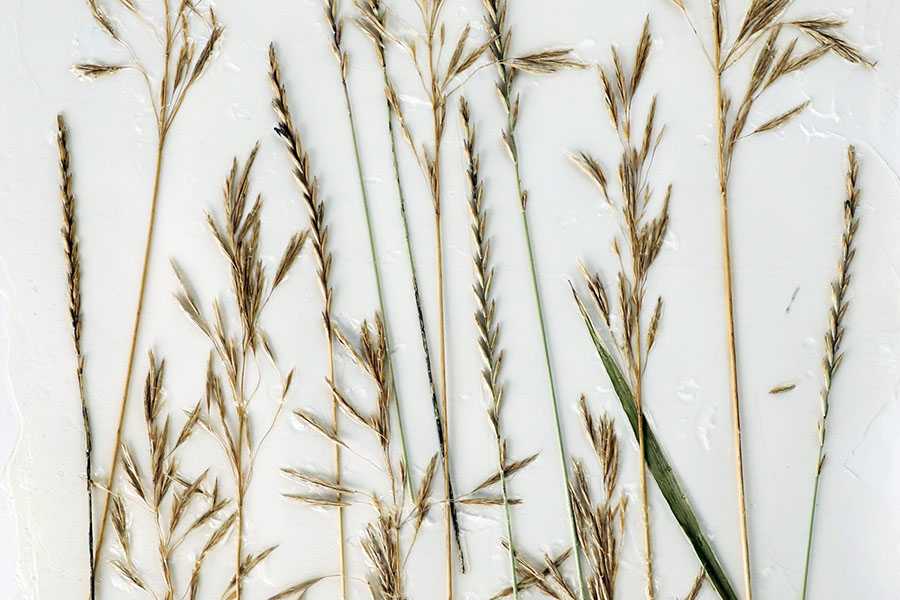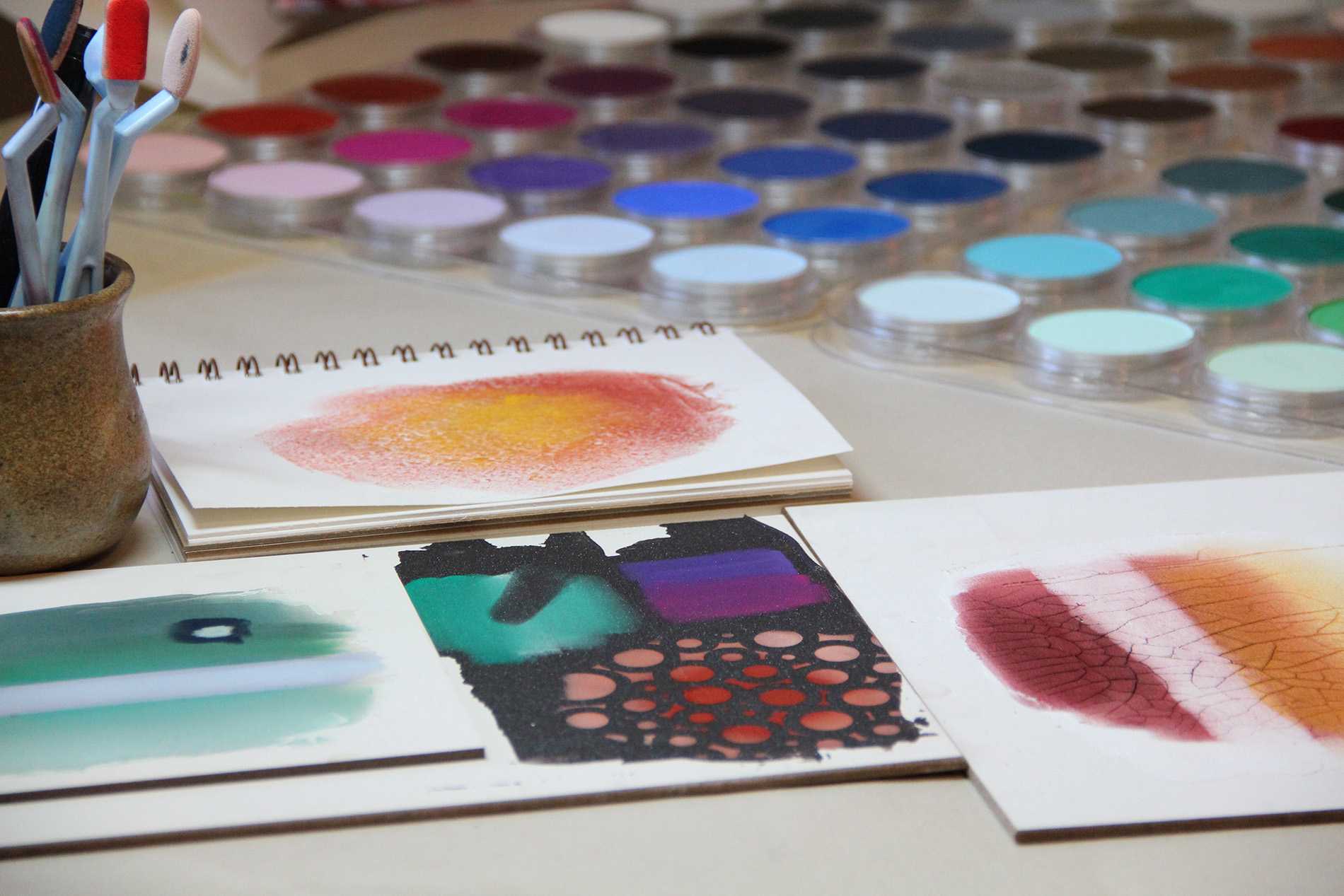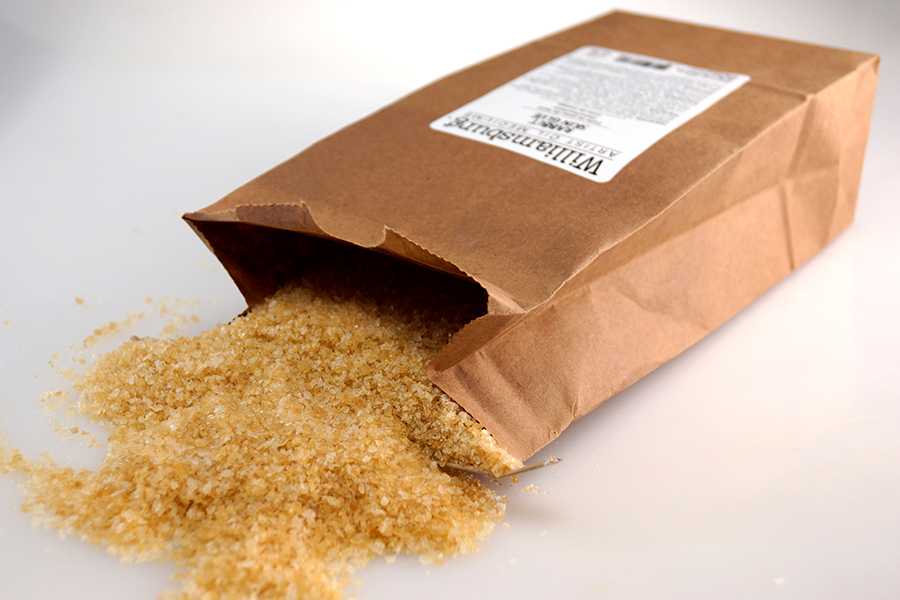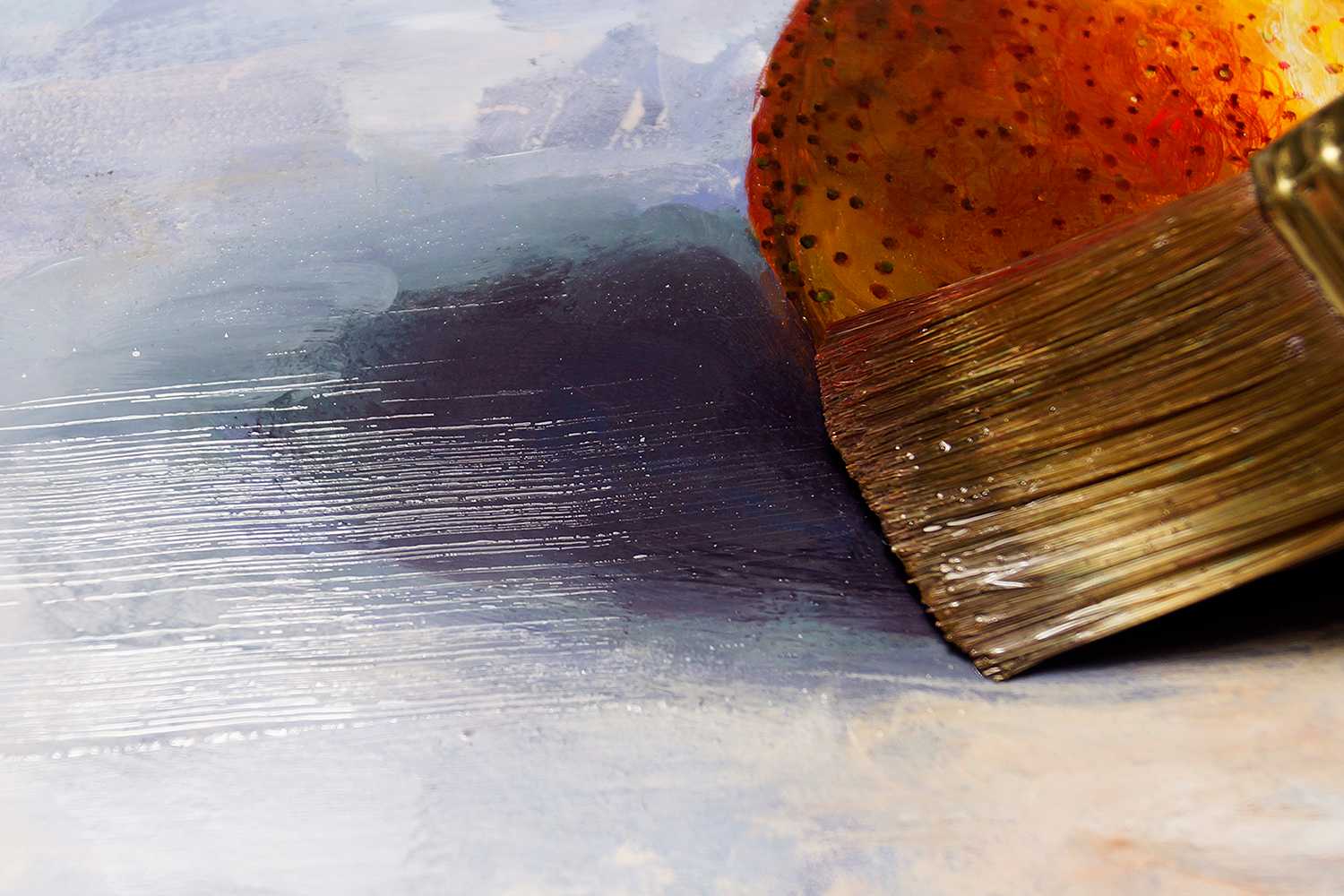ABSORBENT GROUND
GOLDEN Absorbent Ground can be used to create a porous, paper-like surface on many different substrates. It is uniquely formulated for a high level of absorbency when dry. Applied over gessoed canvas, Absorbent Ground allows for wash and staining effects on a stable acrylic film as an alternative to staining raw canvas. Watercolors may also be used, although they will retain their water sensitivity.
PRODUCT DESCRIPTION
GOLDEN Absorbent Ground, designed for stain and watercolor-type applications, is light stable, permanent and flexible. While it has a gesso-like consistency, it is not intended as a gesso alternative. It must be applied over a porous and "toothy" surface, such as GOLDEN Gesso to ensure adequate adhesion due to the type and level of solids in the product. Once properly sealed, it is a permanent acrylic film that does not need to be kept under glass, however, the surface is quite delicate and additional protection is recommended. A properly applied isolation coat and GOLDEN Varnishes (Polymer & MSA) will protect the artwork from environmental factors such as sunlight and dust. For information about our recommended varnishing procedure please see our Varnish Application literature:
Painting in an impasto style over GOLDEN Absorbent Ground is not recommended, unless the surface is properly sealed (see sealing surface section).
PRODUCT APPLICATION
Surface Preparation
Apply onto gessoed canvas, hardboard, wood or other surface. For more complete guidelines on preparing painting supports see the Tech Sheet on Preparing Painting Supports.
Absorbent Ground Application
Absorbent Ground can be applied with a brush, roller or squeegee. No thinning is necessary, although for increased leveling or ease of application, up to 25% water may be added. For best results apply Absorbent Ground over the regular Gesso in two coats - the first coat neat, then wait until fully dry (in 40-65% RH dry time is typically 8-12hrs). The second coat should be with some water (about 20%). We have found that, while building up many layers of Absorbent Ground increases the absorbency only minimally, there is concern with cracking when it is applied too thickly or too many layers are built up in a short period. If a thicker single application is desired, or if applying to a highly textured surface, blending any amount of GOLDEN Light Molding Paste into the Absorbent Ground will decrease the chance of cracking while maintaining considerable absorbency. The greater the percentage of addition, the more flexibility the film will have and the thicker it will become. Testing for your application is always recommended. If a very thick and textured absorbent surface is desired, consider using Light Molding Paste alone. Allow Absorbent Ground to dry thoroughly before paint application.
Acrylic Stains
Almost all GOLDEN Acrylic paints can be used for staining and wash techniques on Absorbent Ground. GOLDEN High Flow Acrylics are the proper viscosity for staining and therefore, offer the most intense stains. Heavy Body, Matte, High Load, and Fluid Acrylics will all need to be thinned with water to make washes suitable to stain with. Fluid Acrylics are the best choice out of this group, since they are the thinnest to start with and require less water to make a wash consistency. Stains must be thin enough to be readily absorbed by the surface. For additional staining effects, dampening the surface with water before applying paint will change the level of absorbency and create a softer edge. Very small amounts of GOLDEN Wetting Agent may be added to the stain or water to create additional effects. If doing so, carefully follow the directions for Acrylic Flow Release, as overuse can cause problems with water sensitivity. Clean tools with soap and water.
Experimental
The following applications and techniques have not been fully tested and should be considered experimental. GOLDEN offers them for artists exploring these materials in innovative ways and for those who are interested in new possibilities and unique effects. Some of these ideas come from successful applications done by artists and GOLDEN welcomes any additions artists might have. To contact GOLDEN with your suggestions please call or email Technical Support at 1-607-847-6154 or techsupport@goldenpaints. com.
Because they are experimental, artists should fully test any procedure before using on anything important in order to work through any unforeseen problems and to make sure it meets their needs and expectations.
Watercolors
Watercolor paints work well when applied over GOLDEN Absorbent Ground and will retain all of their attributes, such as water solubility. The completed artwork can be mounted behind glass like traditional watercolor artwork, or sealed with GOLDEN Archival Varnish. For more information please view our varnish literature:
GOLDEN Absorbent Ground can also be used on watercolor paper to block out unwanted marks or mistakes. Apply the properly diluted ground evenly to the desired area in thin layers until the area is sufficiently covered. Allow the coats to completely dry, and paint over in desired manner.
Oil Paint
While we do not recommend applying full-bodied oil paint directly onto GOLDEN Absorbent Ground, applications of thin washes or glazes of oil paint are possible. When doing so, make sure to protect the substrate from oil penetration by applying a minimum of 3 coats of GOLDEN Acrylic Gesso directly to the support. For more information see our Tech Sheet on Preparing Painting Supports
Always allow oil paints to fully cure before varnishing. Most authorities will recommend waiting 6 to 12 months, although check with the manufacturer of your paints for specific guidelines. Once cured, DO NOT apply an acrylic isolation coat. Instead, apply GOLDEN MSA Varnish w/UVLS or its aerosol version, GOLDEN Archival Varnish, directly to the painting especially if areas of Absorbent Ground are left exposed. Please see our Varnishing Resources for more information.
Different Media Applications
Application of products such as inks, pastels, chalks, etc. is acceptable on Absorbent Ground. However, when attempting to seal the work, changes in the colors and surface qualities can occur and may constitute unacceptable changes for many artists. ALWAYS TEST ON TRIAL PIECES OR INCONSPICUOUS AREAS BEFORE FINAL USE ON ARTWORK. Water sensitive materials can also streak if an isolation coat is brushed over them. For this reason, GOLDEN recommends spraying very light layers of High Flow Medium to initially seal the surface, working with low pressure, and then switching to a GAC 500/Airbrush Transparent Extender mix to progressively build up a thicker film.
ADDITIONAL INFORMATION
Sealing the Absorbent Ground Surface
The absorbent nature of Absorbent Ground mandates the need to properly seal the surface. After staining is complete, the surface must be sealed with a water-based acrylic polymer to prevent dirt, dust, oils or grease from becoming permanently embedded in the surface. This sealing coat is also recommended before applying thicker paints. Sealing the surface first will insure that subsequent paint layers form strong films with adequate adhesion.
To seal the surface, apply 2-3 coats of GOLDEN GAC 500 mixed 2:1 with GOLDEN High Flow Medium for spray application, or GOLDEN Isolation Coat for brushing. A final application of GOLDEN MSA Varnish w/UVLS, its aerosol version GOLDEN Archival Varnish, or GOLDEN Polymer Varnish w/UVLS (refer to GOLDEN Varnish Information Sheets for detailed varnishing instructions) is recommended for further protection.
Disclaimer
The above information is based on research and testing done by Golden Artist Colors, Inc., and is provided as a basis for understanding the potential uses of the products mentioned. Due to the numerous variables in methods, materials and conditions of producing art, Golden Artist Colors, Inc. cannot be sure the product will be right for you. Therefore, we urge product users to test each application to ensure all individual project requirements are met. While we believe the above information is accurate, WE MAKE NO EXPRESS OR IMPLIED WARRANTIES OF MERCHANTABILITY OR FITNESS FOR A PARTICULAR PURPOSE, and we shall in no event be liable for any damages (indirect, consequential, or otherwise) that may occur as a result of a product application.
updated 4.26.22




